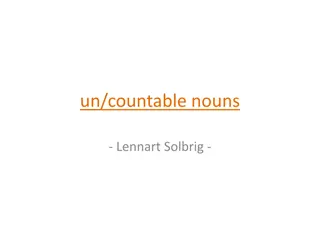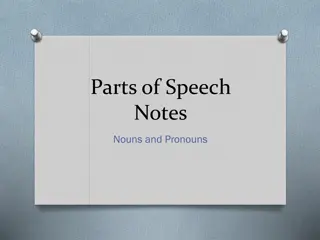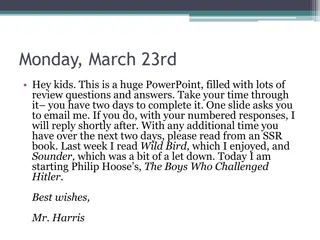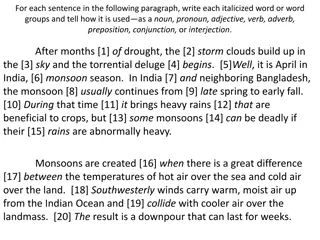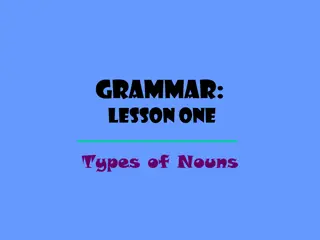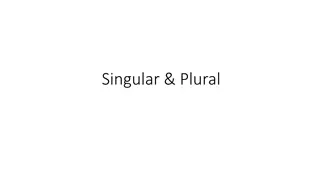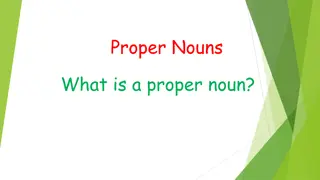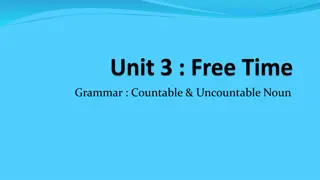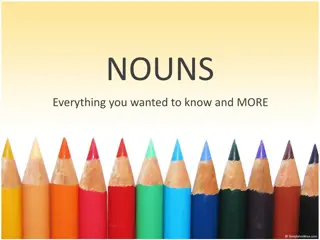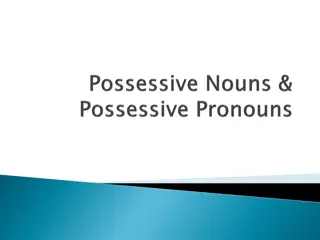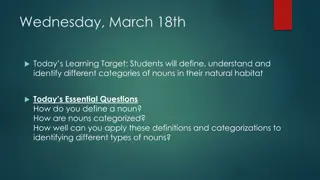Understanding Count and Noncount Nouns in English
Learn about count and noncount nouns in English grammar, including usage of "a lot of," "many," "much," common units of measure, and expressions like "a few" and "a little." Understand when to use these terms with examples for better comprehension.
Download Presentation

Please find below an Image/Link to download the presentation.
The content on the website is provided AS IS for your information and personal use only. It may not be sold, licensed, or shared on other websites without obtaining consent from the author. Download presentation by click this link. If you encounter any issues during the download, it is possible that the publisher has removed the file from their server.
E N D
Presentation Transcript
A lot of/ Many/ Much A lot of, many, much mean: a large quantity of something.
A lot of A lot of may appear before both noncount and plural count nouns. There s a lot of salt in this soup. Don t you eat a lot of apples? 1. 2. A lot of is for affirmative and negative statements and questions.
Many Many appears only before plural count nouns. Many fast food restaurants serve chips. Do many people have poor diets? 1. 2. Many is for plural nouns in affirmative and negative statements and questions.
Much Much may appear only before noncount nouns. The Japanese don t eat much red meat. Did you drink much milk this morning? 1. 2. Much is for noncount nouns in negative statements only and in affirmative and negative questions.
Common Units of Measure They give amounts of either count and noncount nouns. bag of potatoes / bag of sugar These units make noncount nouns into countable noun phrases. 3 bottles of ketchup 4 cups of coffee 1. 1.
A few / A little A few and a little are for a small number or quantity of something.
A few A few appears only before plural count nouns. There are a few boys here. 1. 2. A few is used with plural count nouns in affirmative statements and affirmative and negative questions. Aren t there a few cookies in the box?
A little A little appears only before noncount nouns. 1. Is there a little sugar in that bowl? 2. A little is used with noncount nouns in affirmative statements and affirmative and negative questions. Don t you want a little milk in your tea?




